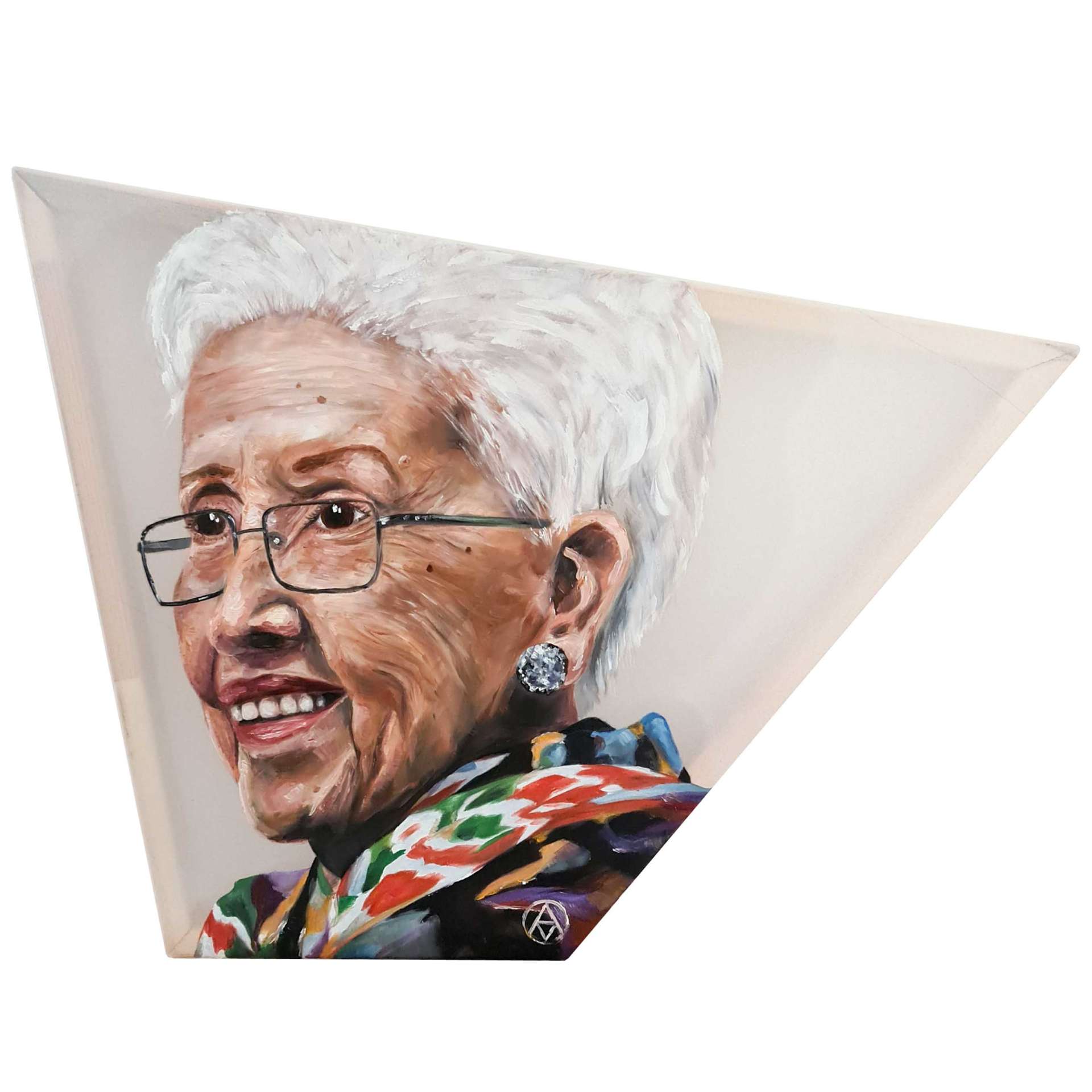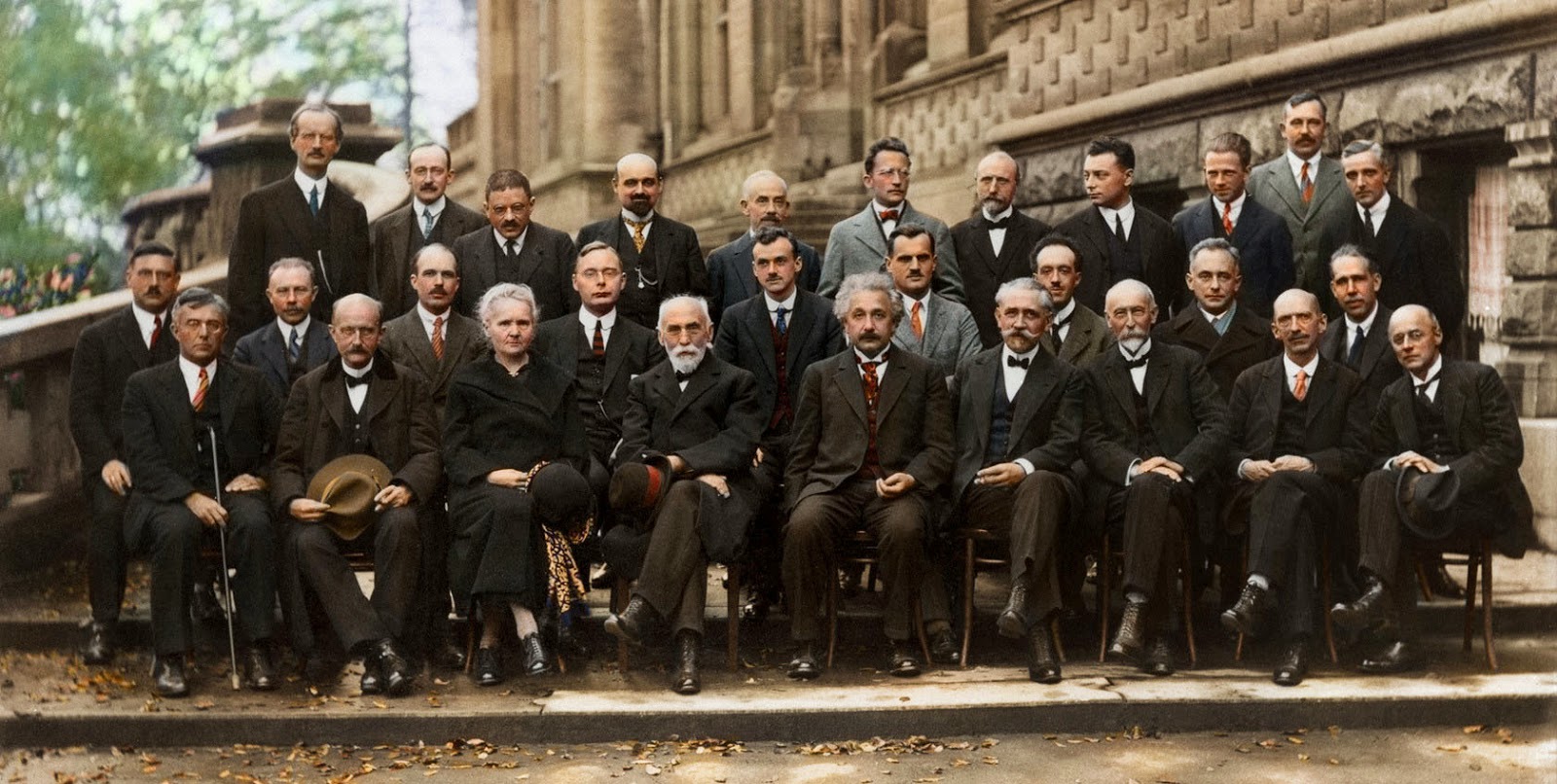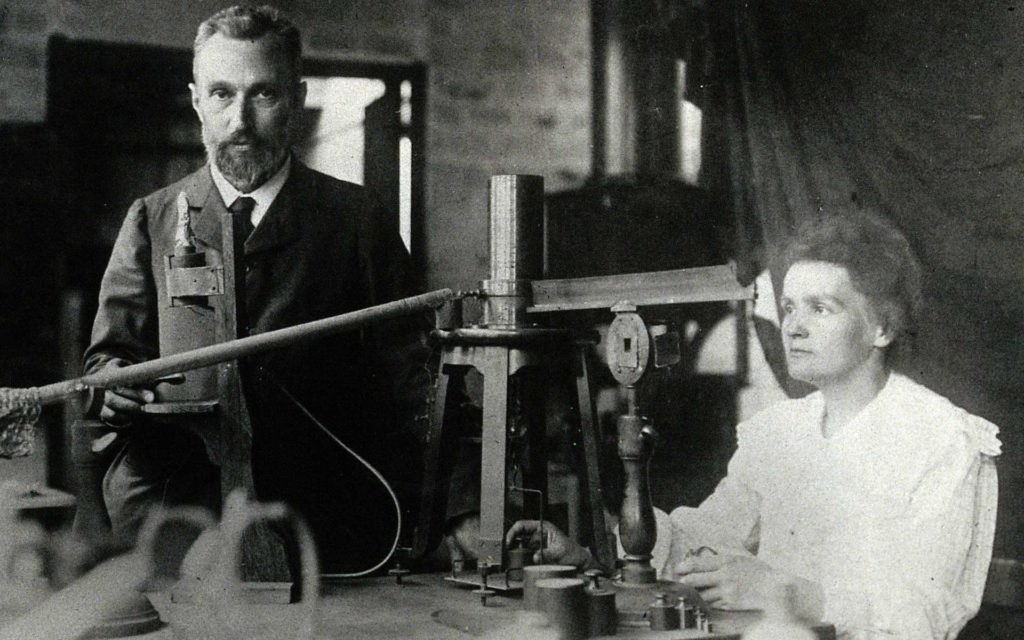
1918-2020
Katherine Johnson
Often dubbed a ‘human computer’, Katherine Johnson has left behind a legacy as a brilliant mathematical mind, a major player in the development of American aeronautical and space exploration in the 50s and 60s, and an inspiration to aspiring African-American STEM students around the world.

A. Piccard, E. Henriot, P. Ehrenfest, E. Herzen, Th. de Donder, E. Schrödinger, J. E. Verschaffelt, W. Pauli, W. Heisenberg, R. H. Fowler, L. Brillouin;
P. Debye, M. Knudsen, W.L. Bragg, H. A. Kramers, P. A. M. Dirac, A. H. Compton, L. de Broglie, M. Born, N. Bohr;
I. Langmuir, M. Planck, M. Curie, H.A . Lorentz, A. Einstein, P. Langevin, Ch.-E. Guye, C. T. R. Wilson, O. W. Richardson
Early Life and Education
The clues to Johnson’s astounding achievements in aeronautical science and mathematics were there in her remarkable childhood talents. Aged 13 she went to West Virginia State College’s high school, several grades ahead of her age, and went on to study at the college itself when she turned 18, under the mentorship of the third African American to gain a phD in Maths, W. W. Schieffelin Claytor.
After graduating with the highest honours, she started as a teacher at a black public school in Virginia. She met James Francis Goble whom she married and had three daughters, all of whom later became mathematicians. She put her teaching career on hold when she was selected as one of 3 black students as part of the integration of West Virginia’s graduate schools – thus began her journey into graduate maths. But this didn’t last long as her husband fell ill and she returned to teaching to support him and her 3 daughters.
Careers and Achievements
In 1952, she applied for a vacancy at the National Advisory Committee for Aeronautics’ (NACA’s, today’s NASA) laboratory in Langley, as they’ve opened positions to AfricanÁmerican women mathematicians to act as computers due to shortage of men as a result of WWII. She worked under the leadership of another West Virginian woman, Dorothy Vaughan. Two weeks into her placement she was assigned to work in the Maneuver Loads Branch of the Flight Research Division, crystallising her role into a permanent one.
In 1957, Russia made history with Sputnik 1, the first artificial satellite to orbit the Earth (which it did in a low orbit for 3 weeks). This fanned the flames of an already heated space race between Russia and the USA. Johnson’s own destiny was set in motion in the events that followed.
After contributing mathematical workings to the 1958 ‘Notes On Space Technology’, which culminated in a team within NACA called the ‘Space Task Group’, tasked with NACA’s first official exploration into the viability of space travel. When NACA became NASA in 1958, Johnson was part of that task force.

“Girls are capable of doing everything men are capable of doing. Sometimes they have more imagination than men.”
FREEDOM 7
Her work on trajectory analysis – investigating angles of entry and landing coordinates – formed a key part of Freedom 7, the US’ first manned space flight in 1961, and paved the way for her groundbreaking contribution to US Space Flight the following year.
In 1962, as the US prepared for the astronaut John Glenn to take their first orbital flight, a huge investment had been made into a global tracking network of IBM computers. Unwilling to trust what was still at the time a relatively untested computing system, Glenn personally requested that Johnson double check the maths as a condition of embarking on the flight. The extent of the trust placed by Glenn and the team in Johnson’s extraordinary mathematical talents has been documented in a blockbuster Fox production, Hidden Figures (2016), along with the hindrances of racial prejudice at the time which made her achievements all the more remarkable.
She calculated the precise trajectories that would let Apollo 11 land on the moon in 1969
Legacy & Death
Johnson sadly died early in 2020 at the age of 101, but only after writing her name into the annals of aeronautical history and earning the Presidential Medal of Freedom, America’s highest civilian honour, in 2015. It’s also worth noting that she has just been posthumously awarded the National Geographic Society’s Hubbard Medal, commending achievement in research, discovery, and exploration – an award previously given in 1969 to the Apollo Mission astronauts, whose world-changing voyage may never have occurred without her work.

Pierre and Marie Curie
